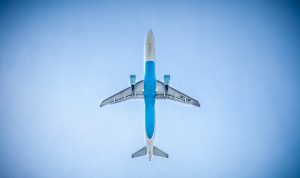 SAS Scandinavian Airlines and Airbus have announced plans to investigate whether a fuel-electric hybrid jet would be beneficial for commercial airlines.
SAS Scandinavian Airlines and Airbus have announced plans to investigate whether a fuel-electric hybrid jet would be beneficial for commercial airlines.
It’s no secret that most commercial airlines, including SAS Scandinavian Airlines, use traditional fuel-powered jets in their fleets. While effective, though, there’s a been a growing push — both internally within the commercial airline industry as well as externally in the public — to develop cleaner jets that produce less pollution. That need has pushed SAS Scandinavian Airlines and Airbus to collaborate on a new hybrid jet.
So, what’s next for SAS Scandinavian Airlines and Airbus? The two companies will pool their money and resources together to determine whether a commercial hybrid jet is feasible. There are other hybrid jets on the market. Currently, however, they consist only of small-scale jets that are typically used for private flights. As a result, commercial airlines don’t have hybrid jets in their standard fleets.
Of course, SAS Scandinavian Airlines has already taken steps to curb emissions with its jets. The airline says it’s aiming to reduce carbon emissions created by its jets by one-quarter by 2030. And now that SAS Scandinavian Airlines has partnered with Airbus, this goal is well within its reach.
“We are proud of our ambitious sustainability work and are now pleased that Airbus has chosen SAS to partner up with us for this future project. If this becomes a reality, it will revolutionize emissions,” said Rickard Gustafson, Chief Executive Officer of SAS. “SAS takes ambitious steps to reduce the negative impact from aviation through innovation, smart solutions and major investments in the latest technology, without compromising the important role of the aircraft in our society—enabling people to meet and contribute to value creation and growth,” he added.
SAS Scandinavian Airlines and Airbus will begin working on the hybrid jet project this month. While neither company has announced when exactly the project will be complete, they say it will likely run through at least 2020. By that time, the two companies should have a better understanding of whether or not a hybrid jet is feasible for the commercial airline industry.
According to a report published by The International Air Transport Association (IATA), the number of people who travel via commercial airliner will nearly double by 2036, reaching a total of 7.8 billion. With so many people taking to the skies, there’s an inherit need for cleaner jets that produce less emissions.



